What Do You Know About the Titanic Graphs
Titanic Survival Analysis — An Introduction to Tableau
Identifying the attributes that indicate whether or non a rider will survive given their grade, fare corporeality, age and more.

With data scientific discipline, the key to learning whatever new applied science will always be practicing kickoff-manus with a projection. To larn Tableau, I performed an assay of the survival rates of the Titanic. The full projection can exist found here, hosted on Tableau Public.
Data Source
Anyone familiar with Kaggle, the data scientific discipline and automobile learning dataset resource, may already recognize the Titanic dataset. This dataset provides observations for each passenger on the Titanic and their survival outcome. For the purposes of this project, simply 871 observations from the training set were used. Ultimately, out of the 2,435 total passengers on board, only 38% survived the send's sinking. This analysis aims to pinpoint the attributes that can indicate whether or not a passenger volition survive given their grade, sex, fare amount, age, number of siblings or spouse on board, number of parents or children on board, and other factors.
What is Tableau?
Tableau is a visual analytics platform that allows even non-technical users to create interactive, real-time visualizations in minutes. In just a few clicks, anyone can combine information sources, add together filters and drill down to specific data.
Importing Data into Tableau
There are dozens of Tableau tutorials out at that place, so I'm non going to dive into deep detail. Just I'll walk through a brief introduction so nosotros can get a sense about how the platform works.
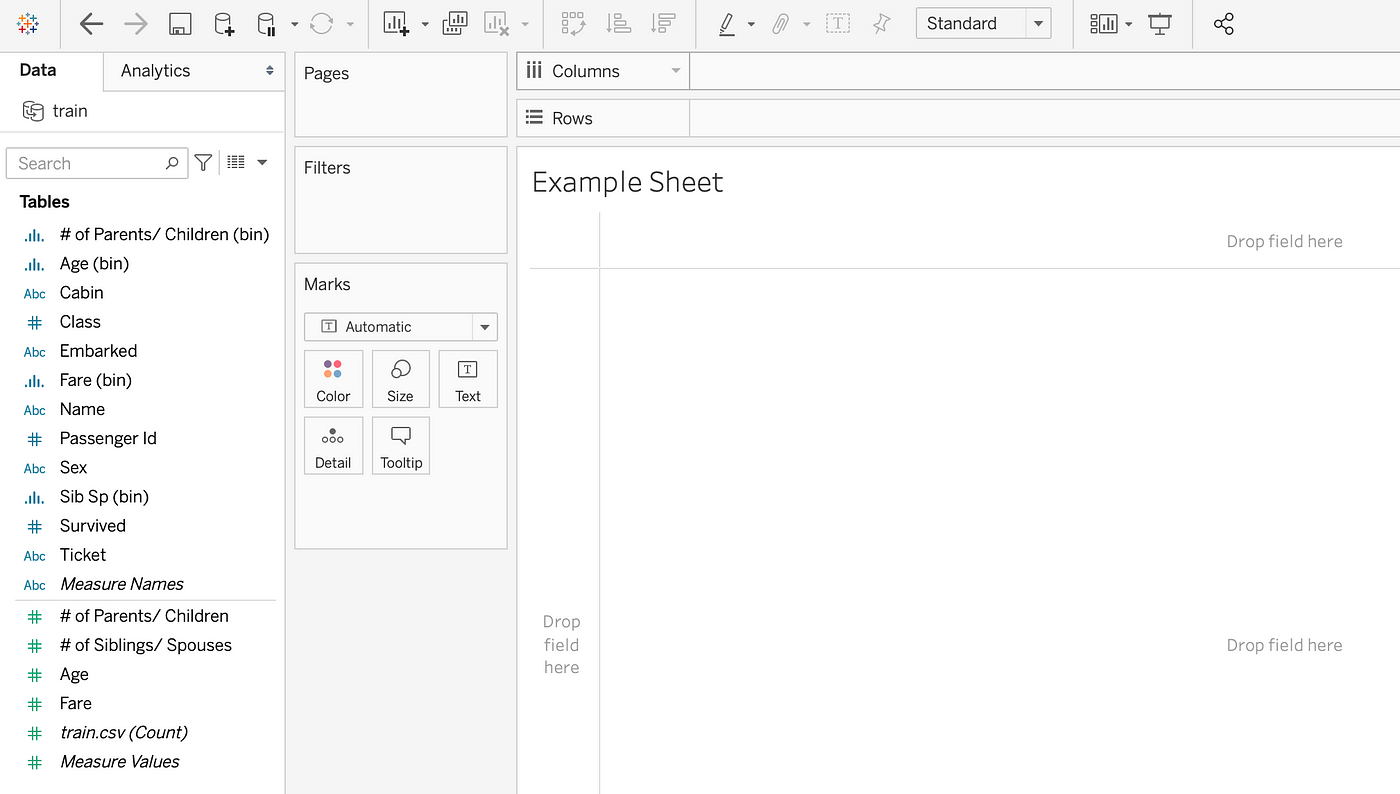
When you open a new workbook on Tableau and load in your dataset, you volition encounter a pane on the left hand side that contains all the columns from your information. This is called the Information Pane. Dragging and dropping Cards into Shelves is where everything starts in Tableau. From there, the possibilities are endless. Next, let's dive right into an case.
Survival past Class
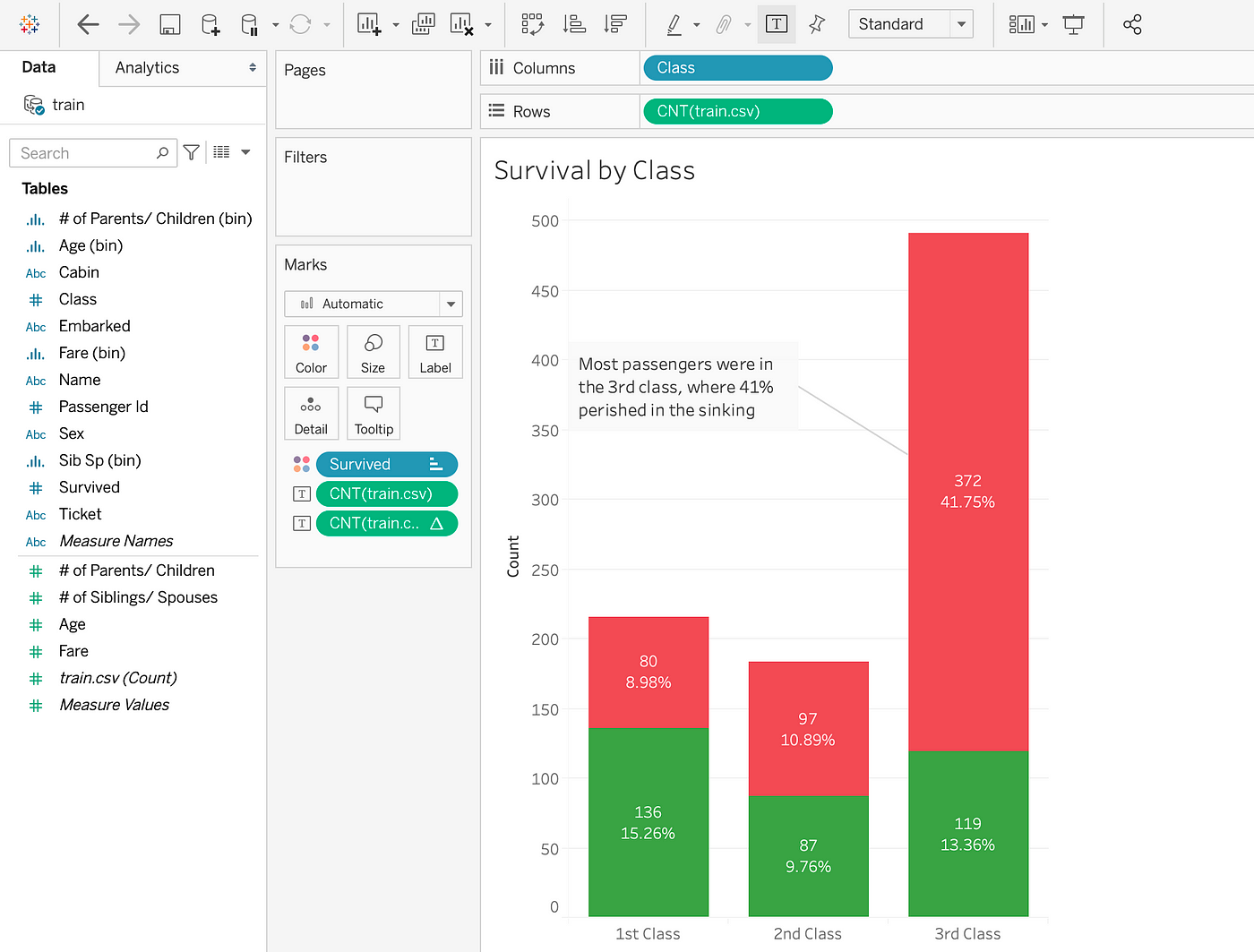
Here, you can see that I but dragged the Grade carte into the Columns shelf and created an aggregation of the count of total passengers in the training fix to drag into the Rows shelf. From there, I just customized the visualization with color coordination by the survival classification, and added the count and percentage to each bar's department.
This was a basic example of the types of visualizations we can practice in Tableau. From here, I won't exist showing the mode I created each visualization. I'll just exist walking through my findings. For this visualization, nosotros can clearly see that a majority of those who perished were in third grade. Allow's look deeper into a demographic breakdown of each of the classes.
Gender Breakdown of Classes
Before that, let'southward take a quick await at the gender breakup of the entire training set up.

Of the tertiary class, most passengers were men. This gives us a clue about the possible gender breakdown of those who survived or perished.
Withal, we can't see the survival rates here. To learn more most demographic breakdown in the survival classes, we tin accept a look at the survival rates by sex activity and age.
Survival past Sex & Age
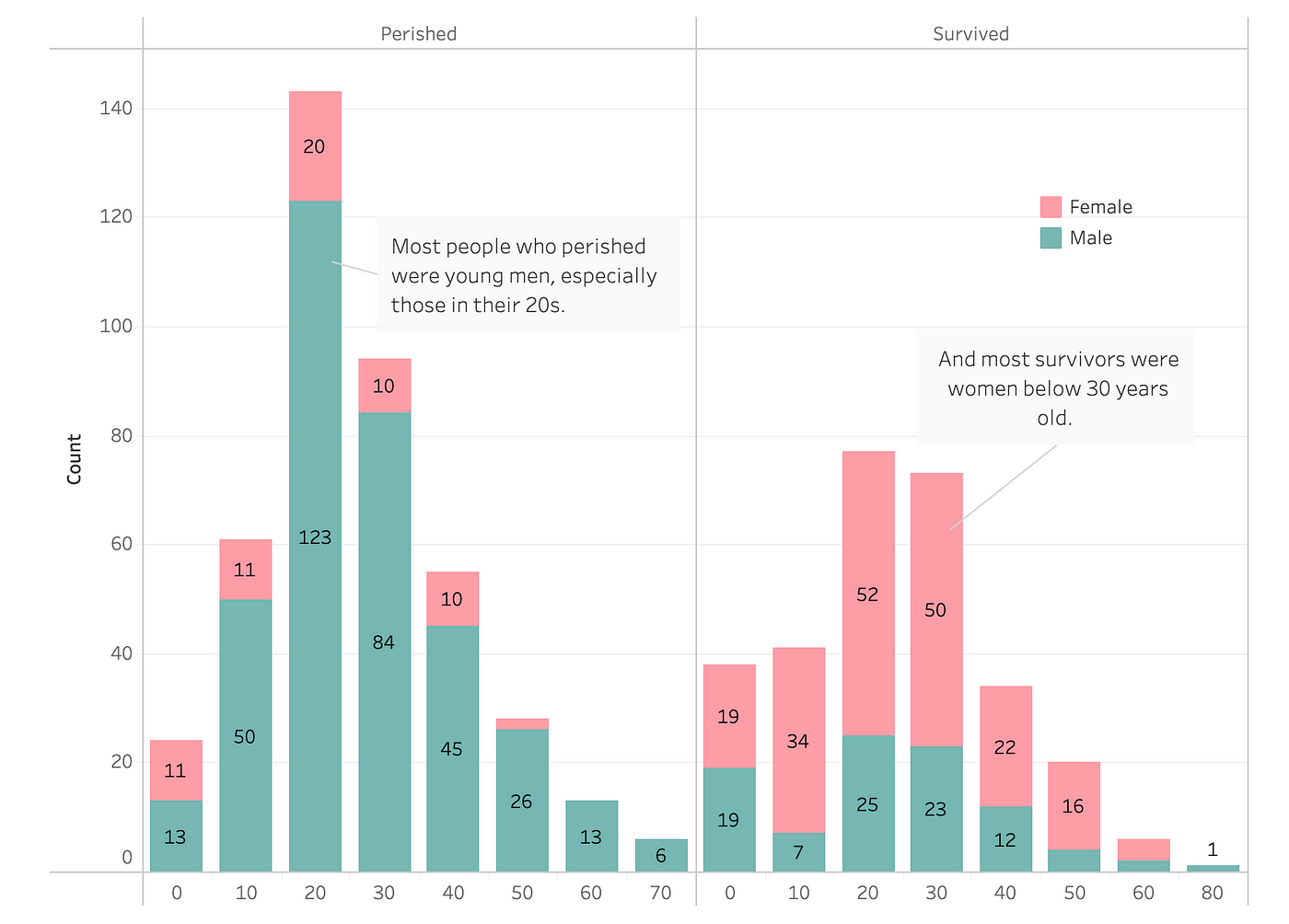
To make this visualization, I binned the ages by intervals of 10 years. This gives us a better sense of the age breakdown. If we look at the 2 columns, Perished and Survived, nosotros can clearly run into that most people who perished were young men. Especially immature men in their 20s. Additionally, about survivors were women below 30 years erstwhile.
I'grand however curious about the class breakdown for these demographics. Adjacent, permit's flip the axis for this visualization and create columns for each of the three classes.
What class were most people who perished in?
A smashing feature that Tableau's Dashboards provides is the power to visually isolate different filters. Let's take a look the class breakdown for just the men.

We tin can clearly see that of the men who perished, a majority of them were in 3rd course. This gives united states of america further insight on the socioeconomic disparities aboard the Titanic.
What form were most people who survived in?
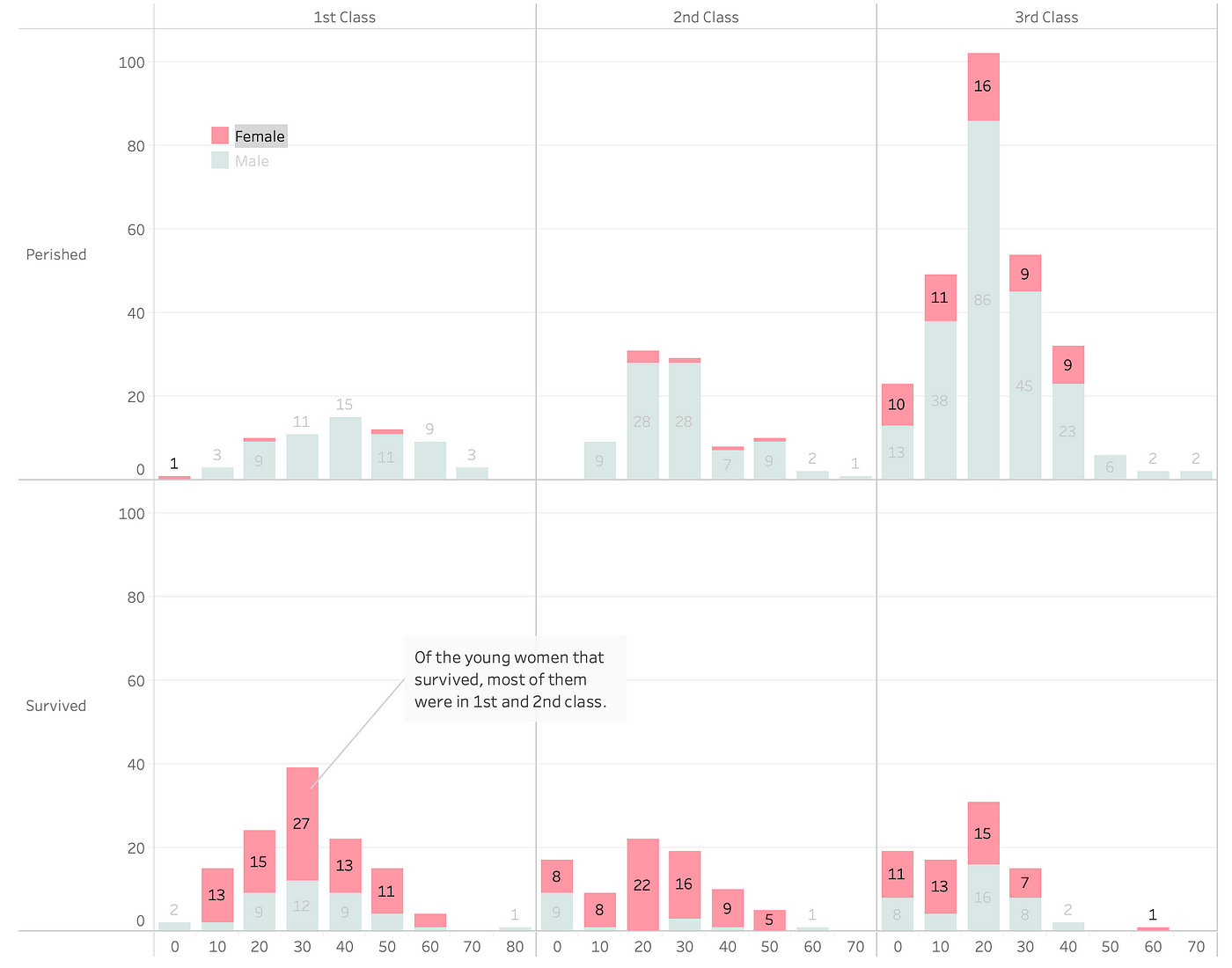
For those who survived, this visualization shows that a majority of survivors were women in 1st and 2nd class. Which is the exact opposite demographic from those who perished in the previous visualization. And of the women who did perish, a majority of them were in the third class as well.
Finally, we tin can take a look at a look at a breakdown of survival rates based on the number of family unit members ane may have had on lath.
Survival by Family on Lath
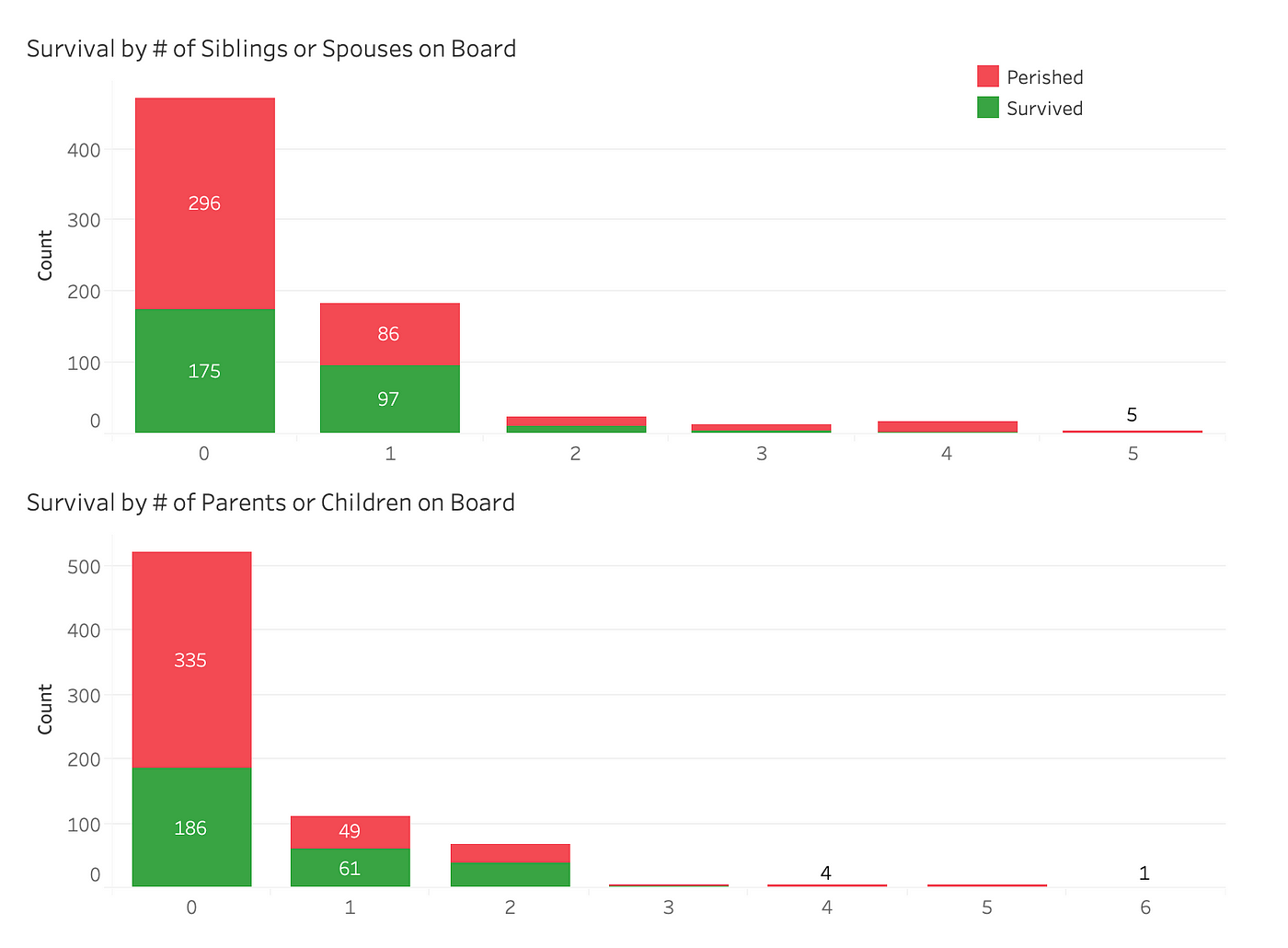
Most people who perished didn't have any family on board. If they did, it was mostly simply one or 2 people. This may have not contributed to their chance of survival. We might exist just looking at whether or non they could afford to bring other people on board. Finally, let's accept a expect at the form breakdown over again for this.
Family on Board for People Who Perished

As suspected, virtually people who didn't have whatsoever family on board were in 3rd class. This could have happened because they couldn't afford an additional ticket. Therefore, we can't really conclude that people who were alone in 3rd class were more probable to perish.
Family on Board for People Who Survived
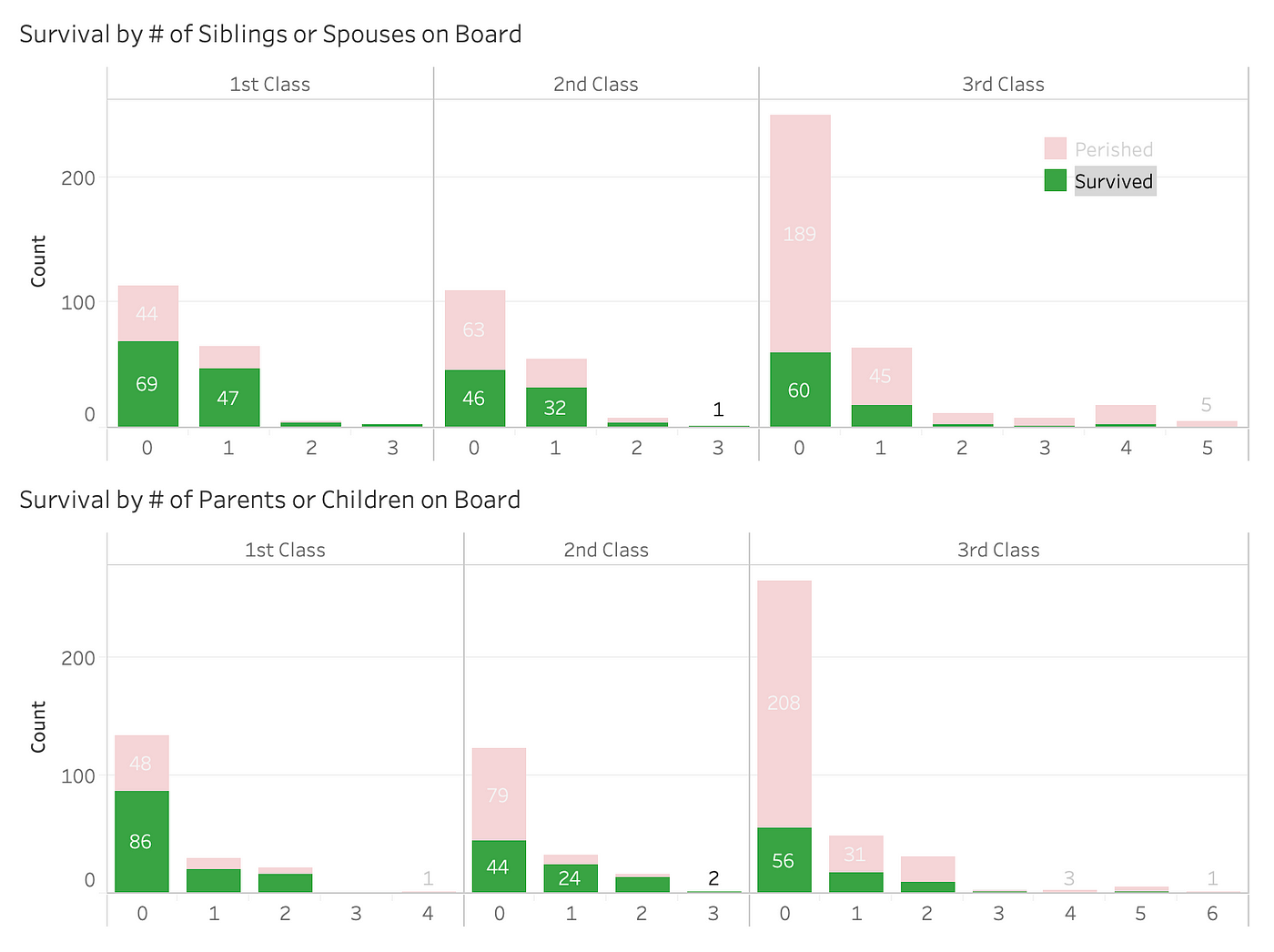
Additionally, well-nigh survivors in 1st and 2nd grade didn't take family unit on board either. So these features really don't have a meaning impact on whether or non someone will survive.
Lessons Learned
Overall, a person's chance of survival was dependent on their sex, age and form. The impact of class is indicative of the imbalanced socioeconomic bureaucracy during 1912. Additionally, the number of family unit members that people had on board didn't have a direct relationship with their gamble of survival.
The piece of work for this project is far from over. You may have noticed that all of the visualizations that I created were bar charts. There are tons of other visualization types we could try out to describe other insights from this dataset. And of form, immediate adjacent steps would exist to examine the other features such equally ticket fare and port of embarkation for further analysis.
The fun with Tableau has only begun, and I encourage every aspiring data scientist to sign up for the gratuitous trial, import a dataset and get-go experimenting with this software.
Source: https://towardsdatascience.com/titanic-survival-analysis-an-introduction-to-tableau-ce642ce07ebb
0 Response to "What Do You Know About the Titanic Graphs"
Post a Comment